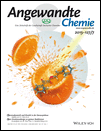Enhanced Electron Penetration through an Ultrathin Graphene Layer for Highly Efficient Catalysis of the Hydrogen Evolution Reaction†
We gratefully acknowledge financial support from the National Natural Science Foundation of China (21321002, 21033009, and 21303191) and the Strategic Priority Research Program of the Chinese Academy of Sciences (XDA09030100). We thank staff at the BL14W1 beamline of the Shanghai Synchrotron Radiation Facilities (SSRF) for assistance with the XANES measurements. We thank Prof. Ze Zhang, Prof. Yong Wang, and Wentao Yuan for help with HAADF–STEM characterization, and Prof. Fan Yang and Dr. Jianping Xiao for fruitful discussions and manuscript proofreading.
Abstract
Major challenges encountered when trying to replace precious-metal-based electrocatalysts of the hydrogen evolution reaction (HER) in acidic media are related to the low efficiency and stability of non-precious-metal compounds. Therefore, new concepts and strategies have to be devised to develop electrocatalysts that are based on earth-abundant materials. Herein, we report a hierarchical architecture that consists of ultrathin graphene shells (only 1–3 layers) that encapsulate a uniform CoNi nanoalloy to enhance its HER performance in acidic media. The optimized catalyst exhibits high stability and activity with an onset overpotential of almost zero versus the reversible hydrogen electrode (RHE) and an overpotential of only 142 mV at 10 mA cm−2, which is quite close to that of commercial 40 % Pt/C catalysts. Density functional theory (DFT) calculations indicate that the ultrathin graphene shells strongly promote electron penetration from the CoNi nanoalloy to the graphene surface. With nitrogen dopants, they synergistically increase the electron density on the graphene surface, which results in superior HER activity on the graphene shells.




